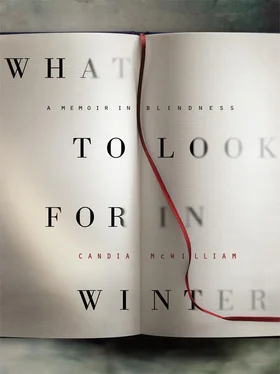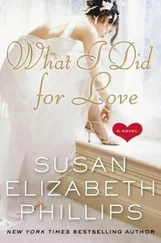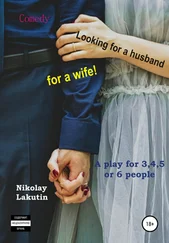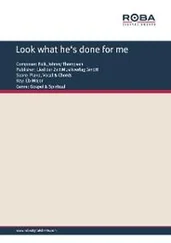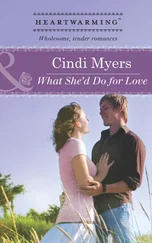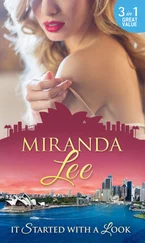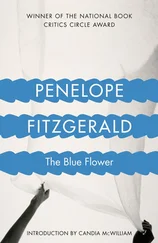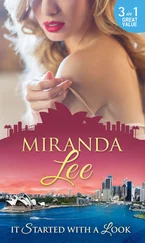No one was ugly in the world of the comic that addled for good my drawing style, Jackie . (‘Be bolder! Be bolder! my father would say, and once I heard my parents saying to Janey Allison’s parents at kindergarten, ‘She can’t yet get Klee.’) Jackie was thrilling pap, tame girl-friendly romance. Other girls brought it to school. I can to this day draw any Jackie type you will, daffy blonde, speccy brunette with latent romantic promise, spirited redhead, polo-necked love-bruiser, handsome toad, reliable mother’s boy. Golly, that sugar, that romantic sugar, it rotted my line. I can draw nothing like as well as either parent did, having trained myself to be more decorative than truthful in the shapes I make on the page when I draw.
But look! The blinding may be helping that, too. I’m starting to learn to draw again, teaching myself from a book given to me by my second husband. The book is called The Tao of Sketching , and it is by a Chinese artist called Qu Lei Lei, who has made an enormous portrait of our son, with a kind of predella feature, about the size of a bath, of his beautiful, strange, extra-bendy hands, folded, which is to be framed separately from the vast head.
So, there will be two ways of looking anew, with these modified eye sockets and with the help of The Tao of Sketching . I have had a good deal to unlearn, my cramped pretty curlicues, my symmetries, my velleity that tends to tidy, stretch, elide, as in fashion magazine drawing. My mother was trained in fashion drawing, and it was her work I copied at the kitchen table as we made all that fun on our own.
My father could draw, where ‘to be able to draw’ means to be able to transcribe that which you see, and pleasingly, in a way that does not betray but rather finds out, and is true to, the object seen. He could also draw decoratively from his imagination, with that trick that takes knowledge, so that he could make a line look as though it were taken from a certain architectural period, or even a period of design-influence. It is not surprising that he loved the architectural jokes of Osbert Lancaster. He had a friend, Peter Fleetwood-Hesketh, who had a similar talent. You are never quite alone with that percipience of eye, that witty strand. You can always make something of what you see. I have a few letters written by my father when he was still very young; he cannot restrain the pen. Finials grow, acroteria sprout, domes swell, columns are tactfully broken to accommodate the script; it is like wandering in a neoclassical garden, a spritzed Piranesi. He could cut paper into Corinthian capitals, into palm trees, into knights on horseback, into fretwork minarets, into a vista of a city. In one letter to a cousin he makes of a telephone receiver an Ionic capital.
My mother could make patterns, strings of cut-out dancing dolls, and she did such things with colour. It was her habit to buy second-hand clothes and to dye them in the big jam pan. Often when I got home from school, she would call out ‘I’m dyeing’ from the basement. Her colours were always changing but her favourites were silver and pink, smoky grey and mauve with no red in it. We mixed colours a lot, at the kitchen table. Guessing what the outcome would be if we mixed powder paint or watercolour or oil paint or Smarties or icing or ribbons, this was a good game. She let me paint potato crisps and offer them around when her friends came to drink coffee or — at Christmas, I think — Cinzano Bianco. She scribbled with wax crayons on cartridge paper — very expensive — and let me colour in all the little moons between the waxen boundaries of scribble, and to try never to have a colour adjacent to itself; was that possible? We used her paints from her student days, a Rowney set with little replaceable pans of watercolour, and a Cotman set whose replacements came wrapped in paper like sweets from Aitken Dott the art supplies shop on Hanover Street.
I had some triangular wooden mosaics with which I made patterns, and some wooden sticks named Cuisenaire that my poor parents hoped would make me better at mathematics, and architectural wooden blocks from Germany in a duffel bag. I would ask my mother all the time, ‘Which do you like best?’, ‘Which is your favourite?’ She would make a case for each. I do it with my children. The youngest gets cross. He thinks that I am being politically correct, that I am in thrall to the tediously New Labourite phenomenon he calls ‘the Equal Elves’. I’m afraid I am just copying my mother.
I cannot remember much about my mother, but I shall try, now, to do it. I am looking for her and with her for my ability to look.
I have looked away from it for a long time while pretending to look at it. God knows how it is for people who contemplate the disintegration or physical fission of someone they love. At least she was in one piece in my bed where she, at thirty-six, lay dead.
I regard (a word of seeing, I see) that last sentence as too aggressive to the reader, too showy, to remain. It is bad form. I cannot, I observe, look at it. So I’m going to make an experiment, and leave it.
I will now try to remake my mother’s last day during which she took me to the Nubian goat farm at Cammo to choose a pointer puppy, a dog that must have been a sop to me, or perhaps to herself, like the drugged meat burglars are said to throw for guard dogs. I remember the lop-eared goats and the brindle pups.
When with either of my parents, I had the sense that each was fragile. I asked them that disturbing incessant question, ‘Are you all right?’ a lot. His breathing sounded wrong, they fought too much, she cried on the edge of her bed. I avoided them on account of this, and hung about after school with the boarders, or walked home with other girls, bribing them with the bus fare I would save by walking. I had friends by now, other children of bookish homes, or daughters of my parents’ friends. I wasn’t popular, but I was on the verge of being a cult. Something was happening at home and other girls’ parents talked about it.
By no means all fathers liked finding me at the after-school tea table when they got in from work. There was something provisional and not respectable about me. It wasn’t just that my mother was tall and sexy and wore sometimes a silver and sometimes a pink wig, that she smoked or had that Englishy voice, the Siamese on a lead, the black poodle-cross (named Agip after Italian petrol—‘ supercorte maggiore, la potenta benzina Italiana ’) or the yellow Labrador Katie. It wasn’t really anything as simple as that I was not named Fiona or Elspeth. I was a Mc, after all, if not a Mac. It wasn’t as though she didn’t hand out jars of home-made, misspelt ‘blackcurrent’ jam, that delicious staining preserve with something of its leaves’ cat’s-pee tang to the black fruit.
It wasn’t Mummy’s awful driving. She learned only late in her life and had a half-timbered Mini van that got into scrapes. She might put the card discs from tubes of Horlicks tablets in the parking meters in Charlotte Square instead of sixpence.
That’s the worst thing, morally, I saw her do.
She was pursued by more than one man who was not within her marriage. One of these, later, after I was the mother of three, came round for lunch with me in my marital home.
‘What happened to your mother?’ he asked.
‘She died,’ I said.
‘Oh,’ he said. ‘What are you doing this afternoon?’
As I’ve said, a number of people have wanted to tell me what my mother did in her last days, or on her last day. I have no desire to know. I may be wrong in this. Other people are involved, and I don’t want them hurt. I don’t want anecdotes or gossip. I want the emotional truth, so I can make her better. And that I cannot have. I want the printout of her human heart.
Читать дальше
